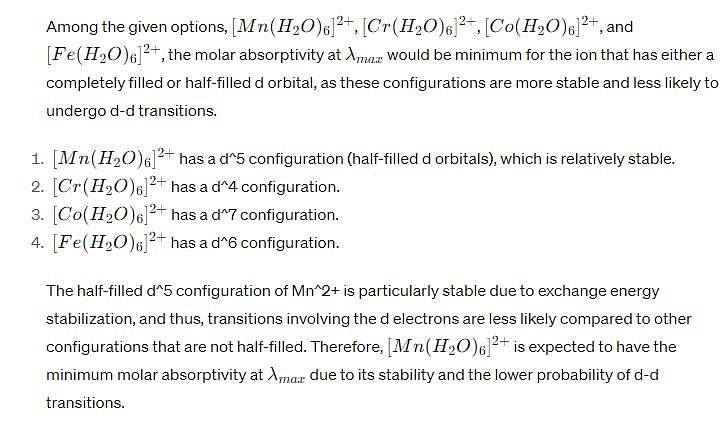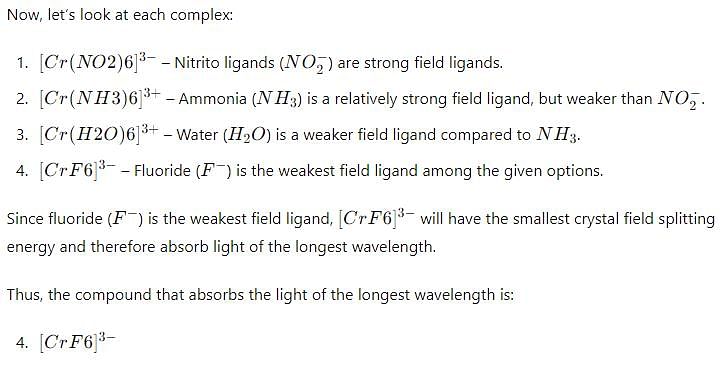Chemistry Exam > Chemistry Tests > Test: Color & Electronic Spectra - Chemistry MCQ
Test: Color & Electronic Spectra - Chemistry MCQ
Test Description
15 Questions MCQ Test - Test: Color & Electronic Spectra
Test: Color & Electronic Spectra for Chemistry 2024 is part of Chemistry preparation. The Test: Color & Electronic Spectra questions and answers have been prepared
according to the Chemistry exam syllabus.The Test: Color & Electronic Spectra MCQs are made for Chemistry 2024 Exam.
Find important definitions, questions, notes, meanings, examples, exercises, MCQs and online tests for Test: Color & Electronic Spectra below.
Solutions of Test: Color & Electronic Spectra questions in English are available as part of our course for Chemistry & Test: Color & Electronic Spectra solutions in
Hindi for Chemistry course.
Download more important topics, notes, lectures and mock test series for Chemistry Exam by signing up for free. Attempt Test: Color & Electronic Spectra | 15 questions in 30 minutes | Mock test for Chemistry preparation | Free important questions MCQ to study for Chemistry Exam | Download free PDF with solutions
Test: Color & Electronic Spectra - Question 1
The red color of oxyhaemoglobin is mainly due to the
| 1 Crore+ students have signed up on EduRev. Have you? Download the App |
Detailed Solution for Test: Color & Electronic Spectra - Question 3
Test: Color & Electronic Spectra - Question 4
The bright yellow color of [Cu(phen)2]+ (phen=1, 10-phenanthroline) is due to
Test: Color & Electronic Spectra - Question 5
The compound that absorbs the light of the longest wavelength is
Detailed Solution for Test: Color & Electronic Spectra - Question 5
Test: Color & Electronic Spectra - Question 7
The complex which exhibits lowest energy electronic absorption band is:
Test: Color & Electronic Spectra - Question 8
Which one of the following complex ions shows minimum intensity of absorption in the UV-Visible region?
Test: Color & Electronic Spectra - Question 10
The lowest energy d-d transition in the Cr(III) complexes varies in the order
*Multiple options can be correct
Test: Color & Electronic Spectra - Question 12
Which of the following compounds shown intervalence charge transfer transition
Test: Color & Electronic Spectra - Question 13
Among the species given, the one possessing charge-transfer transition in the visible region is:
Detailed Solution for Test: Color & Electronic Spectra - Question 13
Test: Color & Electronic Spectra - Question 14
Amongst the following, the strongest oxidizing anion is:
Test: Color & Electronic Spectra - Question 15
The compound which shows Metal to Ligand charge transfer is:
Information about Test: Color & Electronic Spectra Page
In this test you can find the Exam questions for Test: Color & Electronic Spectra solved & explained in the simplest way possible.
Besides giving Questions and answers for Test: Color & Electronic Spectra, EduRev gives you an ample number of Online tests for practice
Download as PDF




















